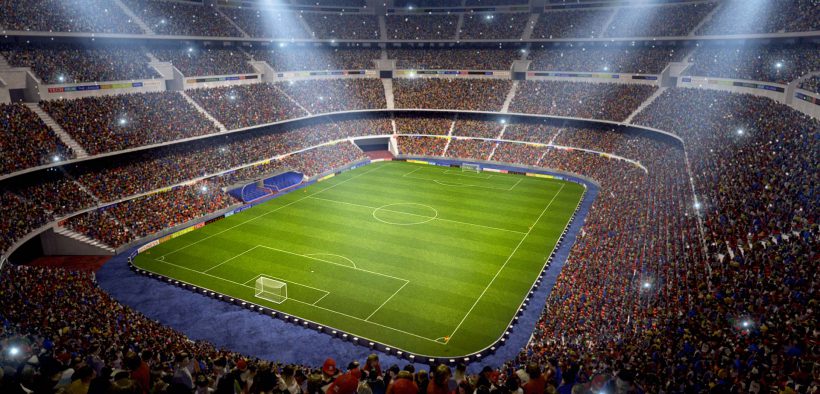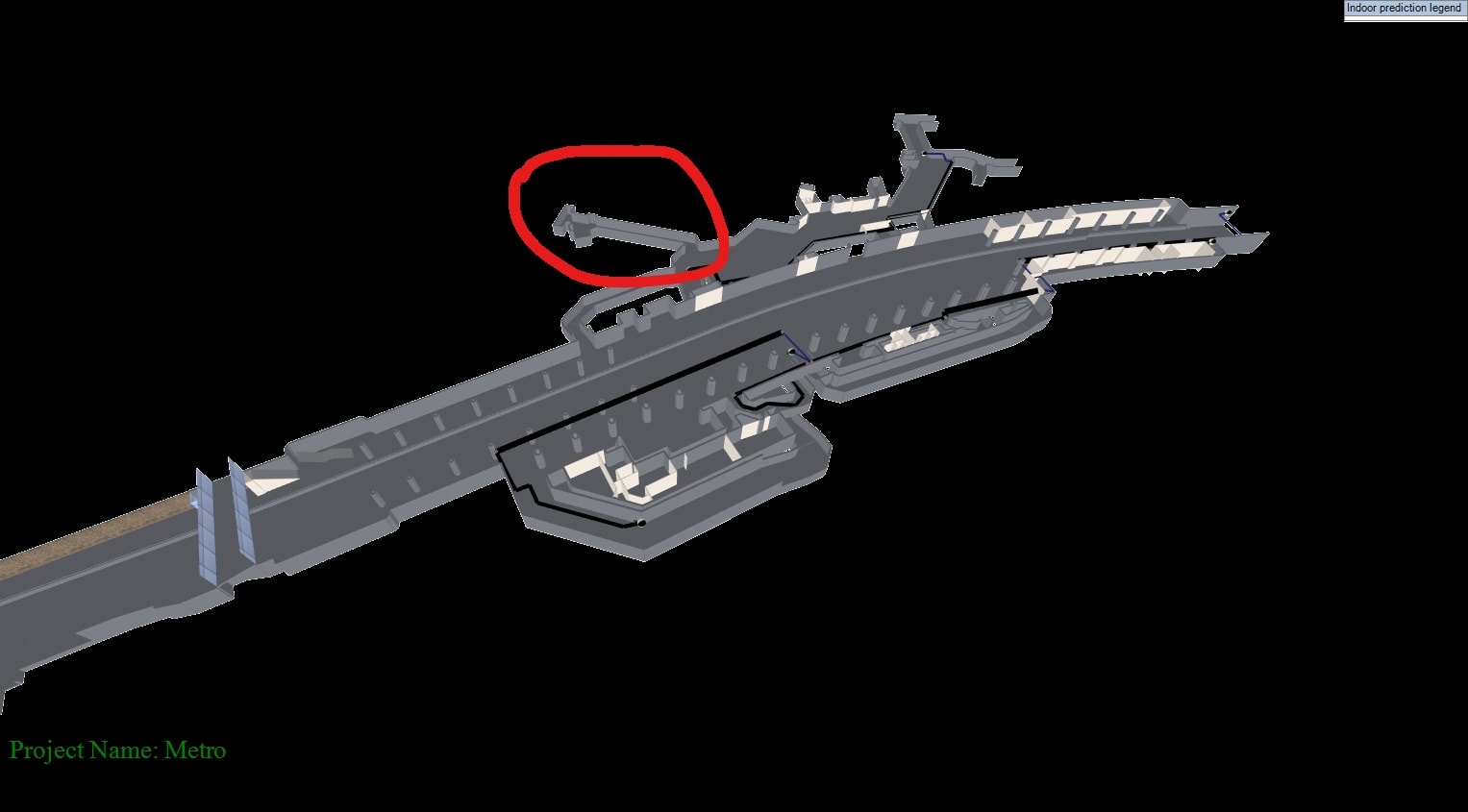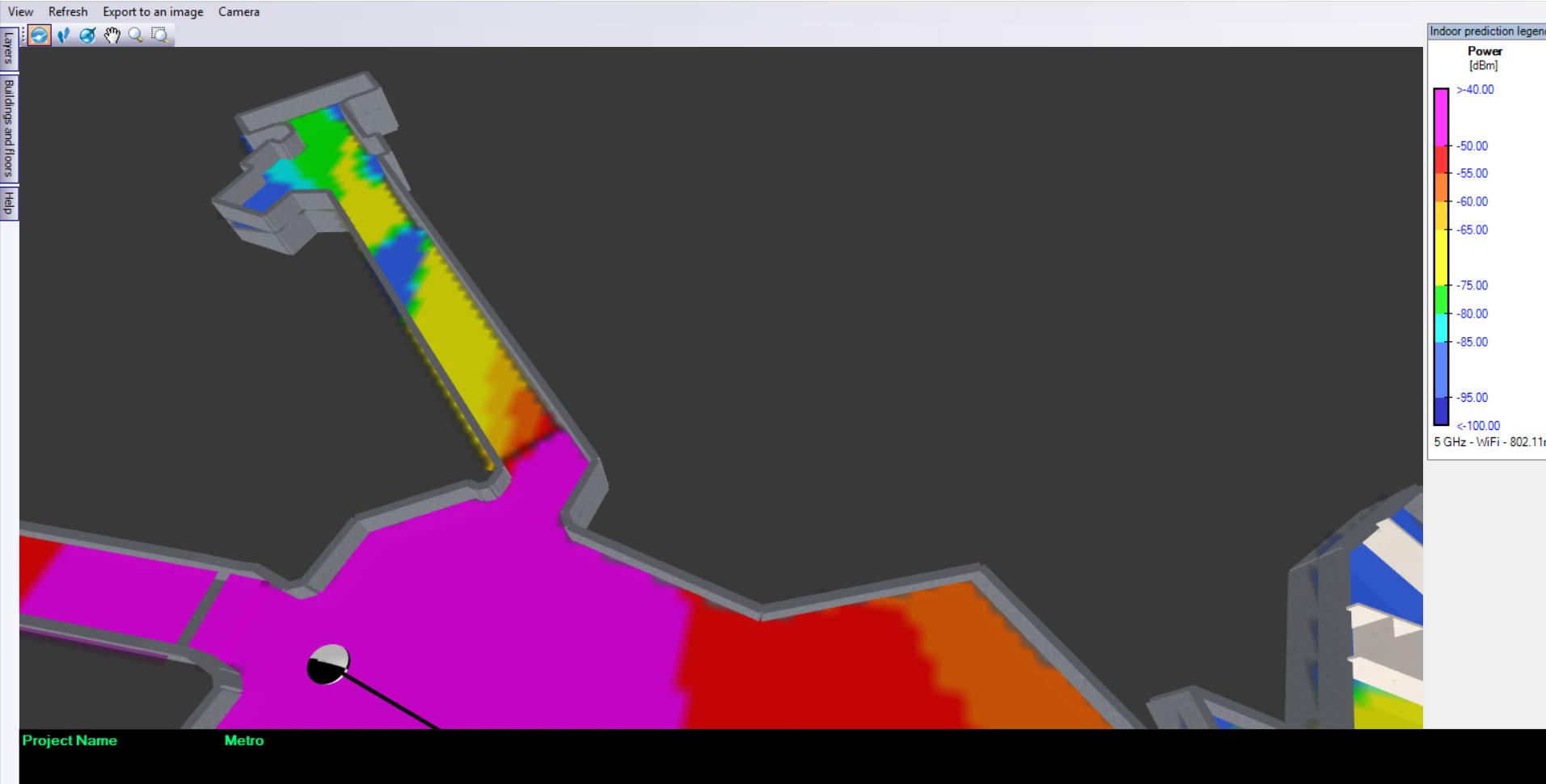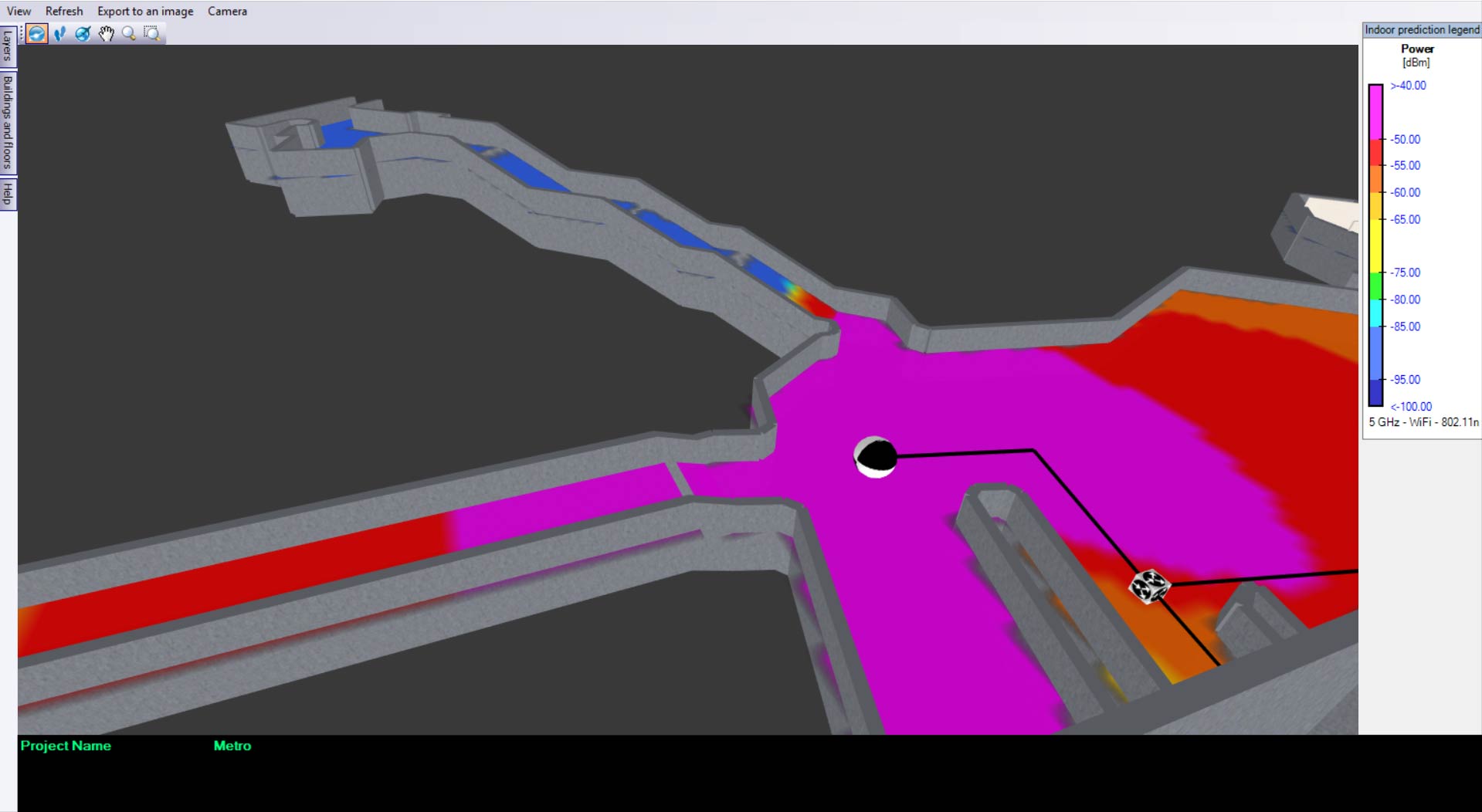Modeling with Incline Surfaces vs. Modeling Without: What’s the Impact?
Share

One of the key benefits that set us apart from cellular & Wi-Fi network planning and design software is the ability to model incline surfaces. But why is this such a benefit? In this blog, I take a look at the value of being able to model incline surfaces by diving into a mini-case study of a subway tunnel Wi-Fi network design showing the prediction results of a subway station using just a flat model, versus the prediction of the same subway using a model with incline surfaces. In it, you will see what a difference incline surfaces can make—both in performance and in cost.
The Flat Model Approach
In the following model of the subway station, the modeling has been done with no incline – everything is modeled flat. The area we will focus on to see the difference will be the area circled red in the image, which is the staircase that leads up from the subway platform to the main level of the station.

Now let’s look at that same flat staircase area after running the signal strength heat map to see what the simulated Wi-Fi signal strength is:
Expected Signal Strength for the staircase area is mostly around -65 dBm – pretty decent.

So in this case, when the designer looks at the predicted performance of the network they could conclude that the network meets network performance expectations and the design is complete. And when the customer reviews the design with the prediction, they will see performance should meet their set KPI’s and sign off on the design.
But let’s take a look at what happens when this same subway station and staircase area is modeled accurately to real life with an incline surface.
The Same Venue with Inclined Surfaces
As can see in the below heat map, when you accurately model the staircase with an incline surface, a real difference in network performance prediction results. In fact, a difference of about 35 dBm.
Expected Signal Strength for the incline staircase area is mostly around -100 dBm (pretty bad).
As you can imagine, the troubleshooting and re-design work that will result from having such a difference in the simulated network performance and the go-live network performance will be significant. So let’s look at a few of the ways this performance difference will now impact you and the project.

How does not using incline surfaces put you at risk?
- Performance
- Costs
- Customer Trust
Performance
From looking at the prediction results in the subway station example, this one is pretty obvious. There is a very clear difference in performance when you design with a flat model versus an incline model. In this case, there was a difference of about 35 dBm for signal strength. Which means when the design done using the flat model is installed in the real subway tunnel where incline surfaces exist, there will be a serious performance issue once the network ‘goes live’. Which brings me to my next point – the increase in costs that can result when a venue does not include correctly modeled incline surfaces.
Costs
Where there is poor performance post-installation, there is troubleshooting—and where there is troubleshooting, there can be large costs associated with it. Fact is, when an installed network does not perform as predicted during the design, significant costs can result. Costs to troubleshoot the issues, costs to re-visit the site, costs to re-design the network, and then costs to implement the required changes to the network. It also costs in terms of time—the fewer issues there are to troubleshoot post-installation, the less time you will spend on that design and the quicker you can move onto the next. The quicker you can move on, the quicker you can grow your pipeline and revenues.
Customer Trust
And last but certainly not least, there can be an impact on customer trust when a network does not perform as was presented to them during the design and approval stages of the project. For venue owners, the more troubleshooting, additional site visits, additional time spent testing and re-designing, all translates to inconvenience for their customers and costs for them.
iBwave Venue Model Examples with Incline Surfaces
And now, just for fun, I include a short video to show off some of the impressive 3D models done in iBwave that take advantage of incline surfaces
What has been your experience in using iBwave to design incline surfaces? Do you notice a difference?
Wirelessly yours,
Kelly
- Cleared for Takeoff: Private Networks in Aviation - January 21, 2025
- A Tour of iBwave Viewer - November 23, 2020
- Introducing Augmented Reality in iBwave Wi-Fi Mobile - September 10, 2020

























